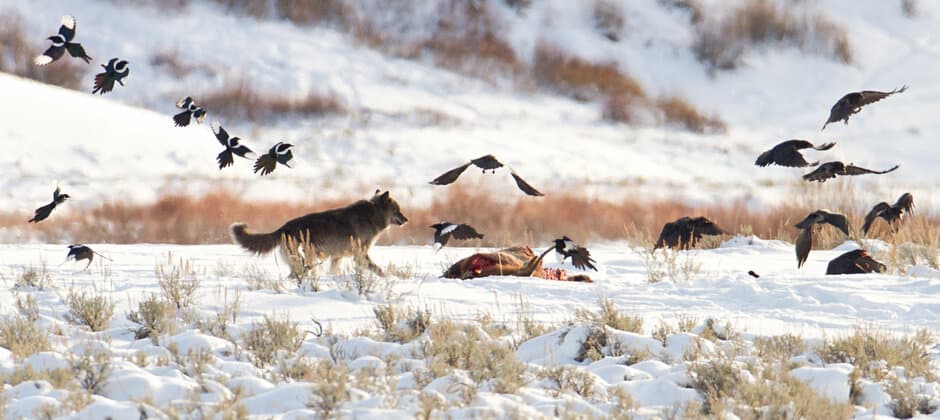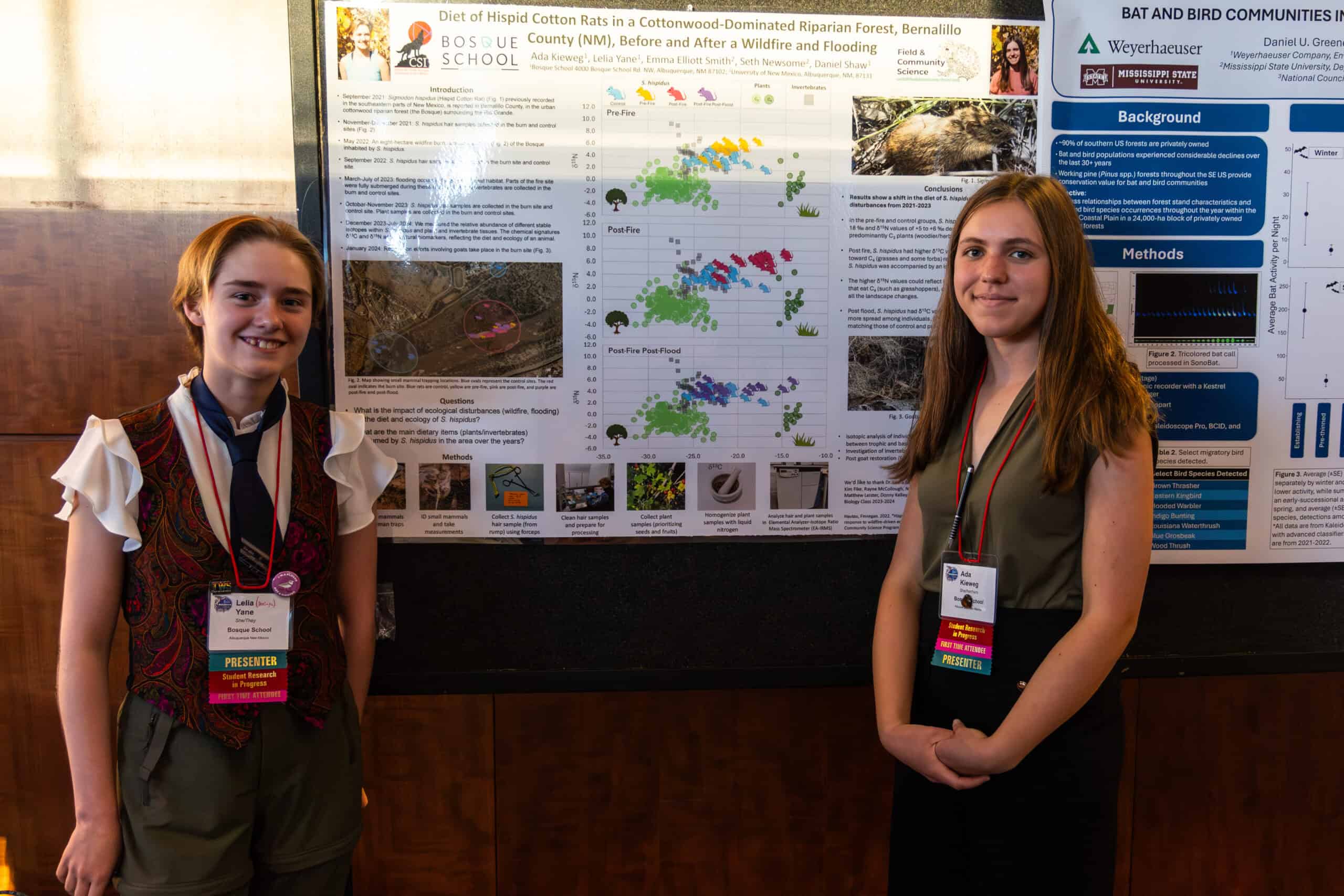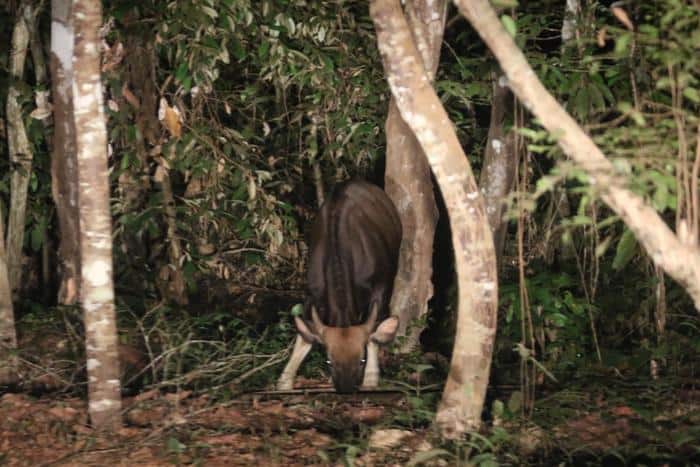Share this article
How do predators limit the spread of CWD in Yellowstone?
Predators could play in important role in limiting the spread of chronic wasting disease among ungulates, but under what circumstances?
Chronic wasting disease was first detected in the Greater Yellowstone Ecosystem in 2018. The deadly prion disease can infect cervid species like elk (Cervus canadensis) and mule deer (Odocoileus hemionus) found throughout the area.
Researchers wanted to know whether predators like gray wolves (Canis lupus) or cougars (Puma concolor) might limit the spread of the disease. If so, this predation would follow a phenomenon researchers call the “healthy herd” hypothesis in which large carnivores weed out sick prey animals, thereby limiting the amount of infection they can pass onto other individuals in their herd.
“Predators might be able to reduce CWD prevalence in prey,” said Ellen Brandell, a postdoctoral researcher at the University of Wisconsin-Madison.
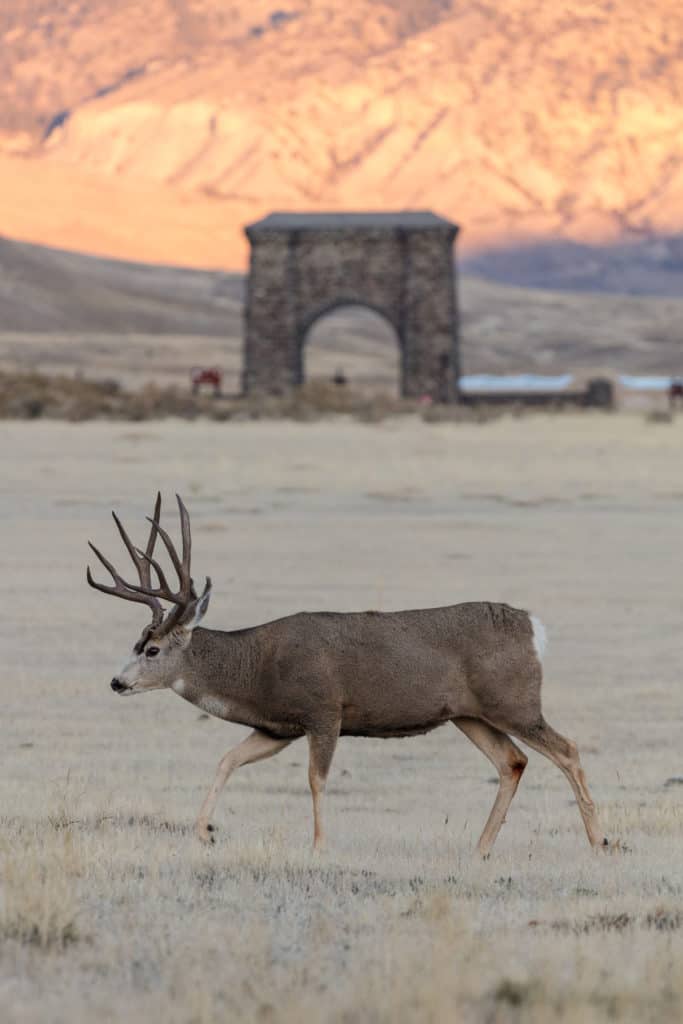
Mule deer are susceptible to chronic wasting disease. Credit: NPS / Jacob W. Frank
In a study published recently in the Journal of Animal Ecology, Brandell and her colleagues created a mathematical model that simulated the effects of realistic predation on ungulate populations with CWD, based on data from Yellowstone. While previous models had looked at how CWD might be transmitted between animals, Brandell’s team’s model included even more detail like ungulates’ levels of infection broken down by age classes and sex. What’s more, they included a predator population that fluctuated with prey abundance and that selected for prey based on their age and stage of CWD infection.
The models showed the researchers that carnivores could best limit the spread of disease when they consume more infected adult ungulates. Essentially, the more prime age adults infected with CWD that were taken, the more the spread of the disease would be limited, Brandell said. However, predators in the wild tend to go after easier targets like juveniles or aging adults. Brandell said field research would be needed to confirm whether CWD really is making these prime age adults more susceptible to predation.
The level of infection in ungulates mattered as well. The models showed that predators had 8 to 10 times greater potential to reduce disease when they selected for severely infected prey than if they selected for uninfected prey. But since CWD is new to the Greater Yellowstone Ecosystem, this part of the model had less empirical support. The authors suggest data from the field are necessary to fill this knowledge gap.
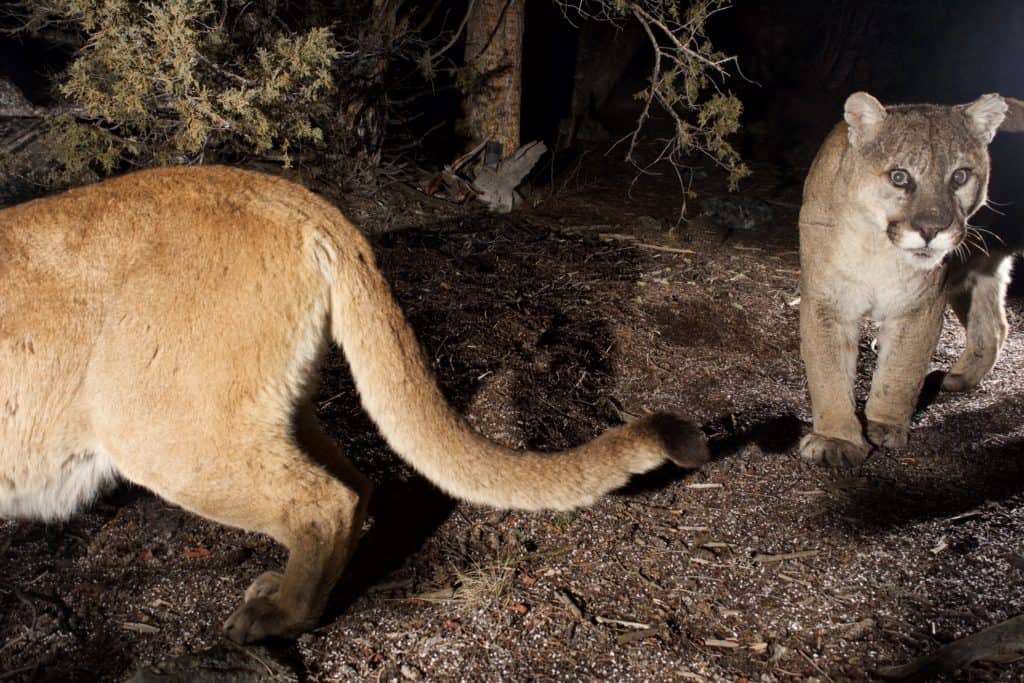
Cougars may help control the spread of CWD in Yellowstone. Credit: NPS/Dan Stahler
Another important factor was the number of predators on the landscape. Brandell said that the larger the population of gray wolves or cougars that select for infected prey, the more likely CWD spread would be limited among mule deer and elk.
Yet this does not come without consequences for ungulate populations, Brandell said. The combined effect of predators and disease could reduce the abundance or population growth rate of deer and elk, which could be seen as a negative impact of predators going after diseased prey.
Header Image:
A wolf chases corvids from an elk carcass near Soda Butte in the Greater Yellowstone Ecosystem.
Credit: Jim Peaco



